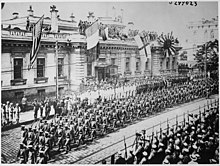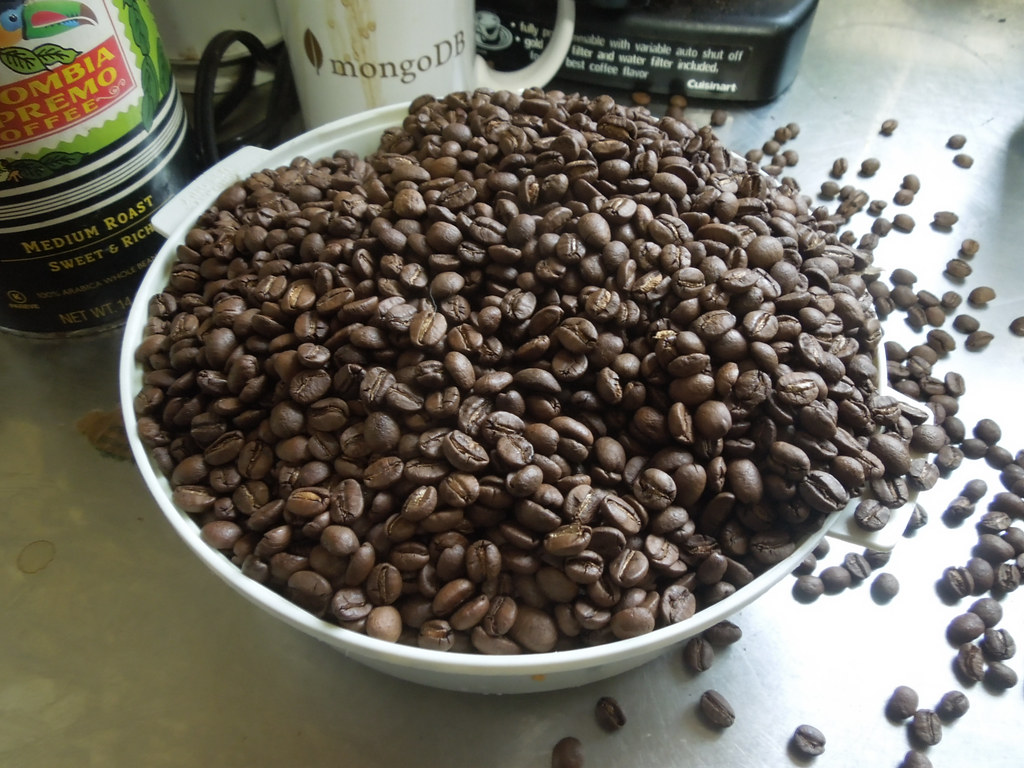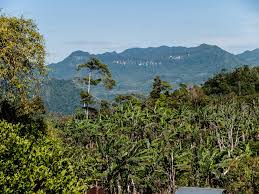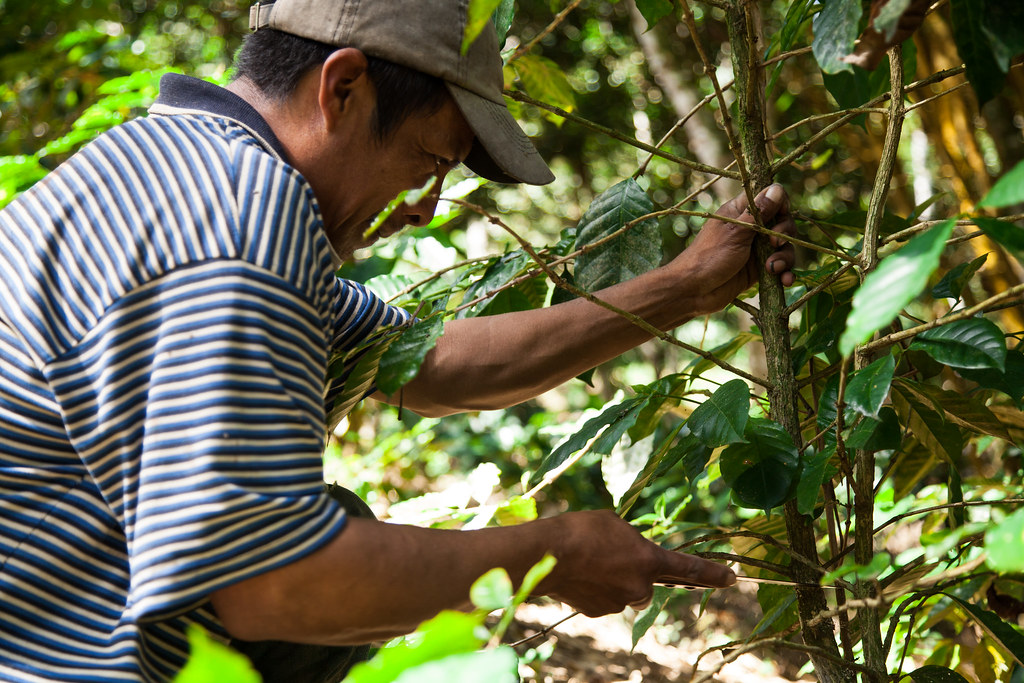Nicaragua is a country whose past is shaken by violent earthquakes and frightful hurricanes, but it is also the world's 12th largest coffee producer.
The very same tropical climate threatens tens of thousands of families, yet it is also what makes cafe Nicaraguense (Nicaraguan coffee) prized so much.
Did You Know? Nicaragua is large as New York State (129.494 square kilometers) yet produces only 1,4% of the world's coffee beans. About 2.1 million 60kg bags per year.
Nicaraguan coffee comes from an unsteady region, but it is still widely consumed all over the world.
For comparison, nearly twice as large, Vietnam makes up around 20% of the global coffee supply. In other words, about fourteen times as much.
This difference is in part due to Nicaragua's history and in part due to population. Only about 6 million people live in the country, making it one of the least populated coffee growers.
Still, coffee accounts for USD$500 million a year in Nicaragua. This fact makes it a central market for the Nicaraguan economy— one of Central America's most impoverished. It gives work to tens of thousands of families and about 300,000 workers.
Yet very few coffee beans sell inside the country. The best Nicaraguan coffee ends up in America, Europe and Japan.
A Journey with Nicaragua Coffee: A Brief History
In Nicaragua, coffee didn't always hold the same value as it does now. In fact, when it was first introduced in 1796, coffee trees were only grown as decorative plants.
It took a few years for coffee in Nicaragua to become a cash crop.
As it happened, the colonial government forced the native workforce into the coffee plantations.
Then, as the mid-1800s hit, and things changed. The Gold Rush swept everyone away and kickstarted a wave of migration to California.
Cornelius Vanderbilt, an American business magnate, did not lose the opportunity.

His Vanderbilt's Transit Company steamboats spread to the San Juan River in 1849. Before that, the journey between East and West Coast would have taken one month.
The new route cuts it to one single month and single-handedly spurred the Nicaragua coffee industry into high gear.
Many of the passengers were California hopefuls, Americans, and used to having a cup of joe. So the demand for coffee boomed. And when the Nicaraguan government started to encourage emigres to settle, many did.
Nicaragua acquired farm owners of the coffee farms in Matagalpa and Jinotega. These regions grow the most significant part of Nicaraguan coffee even today.
A Turn for the Worst
Alas, it didn't last. As the world entered the 20th century, the
Nicaragua ended up with a slower recovery than most due to the civil war that sparked shortly after.
The civil war lasted 12 years, from 1978 to 1990. The industry collapsed. And in the late 90s, hurricane Mitch didn't help matters, either.

Before the 70s, Nicaraguan coffee already had a place among coffee enthusiasts.
Against all odds, as a lack of infrastructure and natural disasters, Nicaragua is taking back her fame as a hub for quality coffee beans.
Coffee is still one of the primary income sources for the population in all of the growing regions.
At the current moment, things are looking up.
Nicaraguan Coffee Flavors
Roasteries love coffee from Nicaragua. Those notes of chocolate and the rich, fruity flavors are irresistible for many. Since Nicaraguan beans are strictly high grown, any well-brewed cup shows delicious complexity and a good balance.
Well-rounded as Nicaraguan beans are, they also make the perfect addition to blends. They share a few of their floral notes with Ethiopian coffees and are known for their mild, sweet flavor. Other central American coffees come off stronger and not nearly as complex.
Cuppers described them with many flavors. Thanks to the different Nicaraguan regions, these beans are made up of very different flavors.
Full of nuttiness, vanilla, and caramel. Dark chocolate.

Those flavors make up the lower tones of these particular coffee beans. The top Nicaraguan coffees offer citruses, florals, apricots, and papaya notes.
You'll find that the higher-toned Nicaraguan coffee comes packed with bright flavors, a pleasant acidity, and a smoother finish than others.
Nicaraguan Coffee Growing Regions
Nicaragua Segovia
OR Nueva Segovia, up north, produces the best Nicaraguan coffee beans. A highly sought single origin. Nueva Segovia coffees are famous for theirs
- florals
- nougat
- vanilla notes
Coffee grown here sits between 3,300 and 4,600 feet above sea level. Nicaragua Segovia beans can be expensive to buy.
Matagalpa
It is also known as northern Nicaragua, is rich in volcanic ashes. The Matagalpa region grows Arabica beans of the Caturra and Bourbon variety, at 3,300-4,600 feet up in the highlands. This region is often called "Pearl of the North" or "Land of Eternal Spring." due to the mild climate.
Jinotega
Is the top region to grow Nicaraguan coffee in. Altitudes (up to 5,600 feet above sea level), high humidity, and highlands rich in nutrients. This area got it all. Bourbon and Caturra varietals are popular choices, and the infamous Elephant coffee bean grows in Jinotega too. Together with the Matagalpa region, Jinotega produces 80% of the Nicaraguan coffee beans.

Honorable Mentions
Esteli, Madriz, Managua, and Granada, the last growing regions, aren't as well known, but still produce high-quality green coffee.
Nicaraguan Coffee Varieties
Elephant Beans:
Also known as Maragogype or Maragogipe. It belongs to the typical varietal. The whole coffee bean is twice the size of Arabica. The plant is taller than any Arabica or Robusta tree, but the yield is low as all Typical.
It grows well at 2,000-2,500 feet above sea level. Fickle quality, but their best products give clean coffees, with good body and balance. A bright taste. Maragogype grown in Nicaragua is a much-loved novelty.
Caturra:
A varietal loved by micro-farms everywhere, the Caturra tree is a dwarf varietal. It brings bright, tart flavors.
Bourbon:
Best known for the high-quality beans, a common variety for specialty coffee. Every region, be it Segovia, Matagalpa, or Jinotega, grows some of this variety.
Curtain Catimor:
High resistance to diseases and high yields, but the beans aren't always packed with flavor.
Maracaturra:
Hard to grow healthy. But the tropical fruit flavor and well-developed acidity make it worth it.
Pacamara:
Pacamara gives low yields, but the flavor profile is similar to Bourbon beans. These coffee beans are less sweet than Bourbon once ripe.
Growing Nicaraguan Coffee
In Nicaragua, coffee is grown in the highlands and sits at 3,600 and 5,600 feet above sea level. That's why it's certified as high grown. These altitudes ensure that the Arabica coffee ripens to reach the top grade.
The cold slows down maturation and helps develop the sweet flavor in the coffee bean. So does the shade, often offered by the mango and banana trees.
Although Organic Nicaragua fair trade certifications are hard to come by, most of the country's trees would qualify for it. The traditional coffee growing methods of Nicaragua small-scale farms use no pesticides.
Farmers avoid fungi only through a variety of choices and attitudes. Of course, the volcanic soil inhibits molds too.
Every coffee plant gets examined by the producers. Signs of a healthy plant are an intact, whole bean. Coffee with scorch marks on the leaves gets rejected. That's why shade grown certifications are so necessary.
Direct light burns coffee leaves and affect yield. In conclusion, shade-grown is a vital step in coffee-growing to a high-quality grade.
Harvesting Nicaraguan Coffee
In Nicaragua, the harvest season lasts from October until March. Pretty much all the coffee produced in the country gets picked by hand.
Since Nicaraguan coffee farms are family-owned, harvesting happens with no tools.
Pickers check each coffee bean for defects and ripeness.
Anything that isn't a whole bean the picker rejects, which is only at the harvesting stage.

About 95% of Nicaragua coffee farms are either micro or small-scale farms. The latter hire, daily workers, while in micro-farms, families do all the harvesting. Intercropping is a widespread practice in these parts.
However, do not forget the last 5% of bigger farms. These estates produced 36% of all coffee in the country.
Coffee Processing in Nicaragua
Once harvested, coffee undergoes another round of selection. Only then, finally, workers take it to the coffee mills. Here, they process coffee with one of the three standard processing methods.
Processing Methods:
- Washed method: This is the most popular method for much of the world coffee, not only in Nicaragua. This method makes it easy to skim off whatever inferior beans escaped the selectors' eyes. Beans floating on the surface of tanks get thrown out. After this, the rest goes through the diaper and then fermented before for one day. So coffee loses the mucilage.
Natural method: A traditional form that is making a comeback. It doesn't guarantee a great final product, but it's suitable for countries affected by water shortages. Cherries go through a drying stage before depulping.
Honey process: It's halfway between the washed and the natural method. The latter allows a more careful use of water; coffee processed like this show strong caramel notes.
Nicaraguan Coffee Industry Challenges
Like many developing countries, Nicaragua lacks the modern infrastructure to ship and process coffee. Working on tiny plots cut away into much of the farmworker's salaries, and production often isn't fair.
For example, an estate makes 7,500 lbs of coffee for a lot, while the typical farms only 1,000 lbs. Aside from size, the most prominent farms can invest in production equipment and irrigation pumps.
This luxury isn't an option for micro-scale farms. Plus, moving the product around is hard. Most of the small-scale businesses have little road access. Neither has a safety net to lie help to in case of hurricanes and floods.
From the Ashes
In the last decade, projects such as the CFC (Common Fund for Commodities) started to provide aid.
The project builds coffee washing stations and offers loans to the disadvantaged.

Initiatives by the Cup of Excellence also begun to promote coffee quality and organize training for farmers.
How to Shop for Nicaraguan Coffee
Nicaragua coffee is a great starting point for people who don't know how to handle a coffee bean. Green coffee grown in Nicaragua is easy to source, though fair trade certified beans are still new to the Nicaraguan coffee trade.
That's fine. Whether it is fair trade certified or not, coffee grown in Nicaragua doesn't say much. Or is related to how it's actually grown. Good coffee, Nicaragua shows, depends on the growing region.
Besides, every beginner should learn how to search and to pay attention to the label. Always look for terms such as shade-grown and high grown. If it is from Matagalpa, Segovia, or Jinotega, the beans' origin also tells you much about the flavor to expect.
When and Where to Shop Organic Nicaragua
Fresh coffee beans are available from May-June to late summer, so that's also the time to order some. If you do it in that window, your chances to find great organic Nicaraguan coffee will rise with the flavor intact.
A bag can cost less by weight, but it may be better for the beginner home roaster to get coffee by the ounce and a local roaster. It's way easier.
Regardless, if you're serious about learning, look for a single origin Nicaragua bean. You can learn coffee flavor profiles this way.
Beware: Where Not To Buy From, What to Avoid
Do not buy ground coffee if you can grind it yourself. Nothing beats your very own ground coffee, and many places sell roasted or green organic coffee nowadays.
Note: Pre-roasted coffee tends to be stale. Choose a local roaster for flavor.
Roasting Nicaragua Coffee
A medium roasted coffee is the best bet for the home roaster. For one, it's easy to go too far and overdo it with a dark roast.
When you can stop before the second crack, you've discovered a surefire method to enjoy the signature chocolate notes without the burnt taste.
Thankfully, Nicaraguan coffee is very forgivable if you roast it at home, an excellent choice. You can also find a blend that includes Nicaragua.
Medium roast Nicaragua highlights acidity and develops a sweet taste, making for a bright, complex cup of coffee.
Plus, if you're a beginner, you might also want to experiment with drinks.
A medium roast goes well with most of them. Espressos, Americanos, and French press will all taste amazing. Same with milk additions.
Try making a latte, or serve your espresso with a spoonful of milk foam.

If you're more experienced, go ahead with the dark roast. You can bring out intense nougat and chocolate notes, but choose well what coffee you use for it.
Like the one from Segovia, the best coffee should go through a light roast and no more. A light roast is the only method that won't destroy the florals.
How to Brew Nicaragua Coffee
Nicaragua coffee tastes good hot, just as it is cold. Of course, it depends on how much you appreciate acidity in coffee. How much chocolate and honey taste you want to feel.
Cold brews smooth acidity out a significant margin. In that case, a pour-over or drip is the best for you. If you want more low tones, go for a classic espresso or with a Moka.
In any case, before brewing, you should pay attention to the grind. You can have rosters to grind your coffee for you, but as with any coffee-making step, the more you do at home, the fresher it is. A medium grind will do for Nicaragua coffee.

